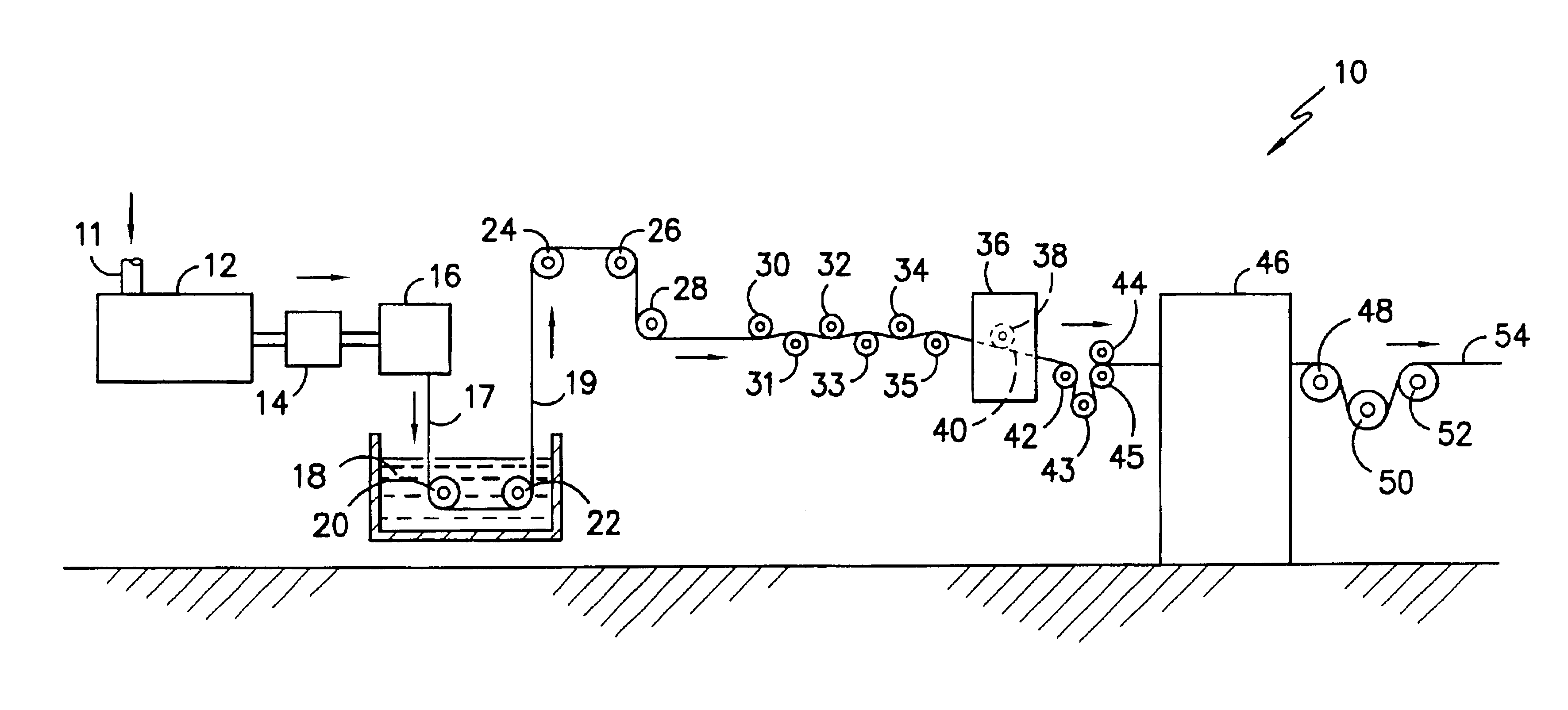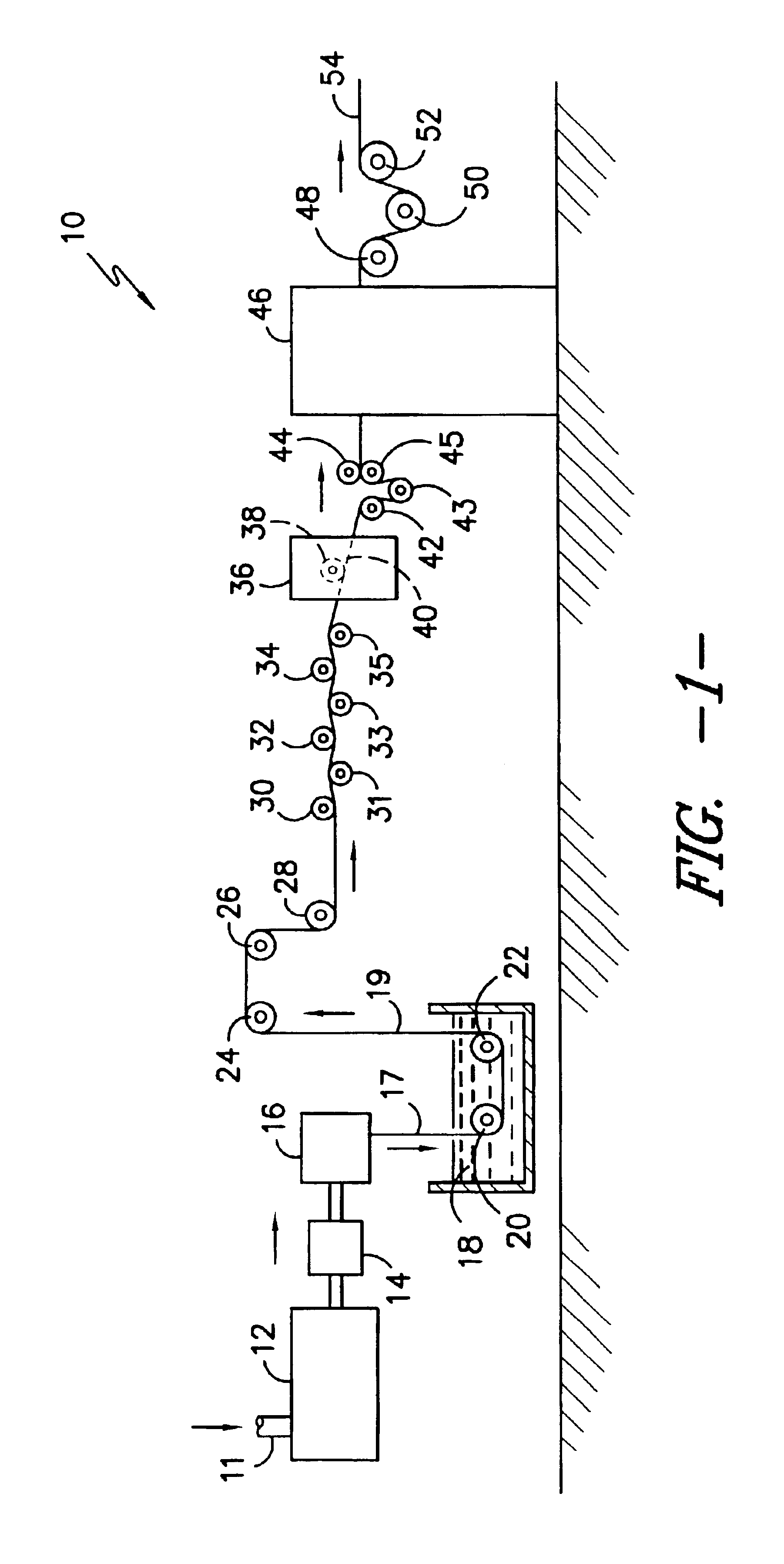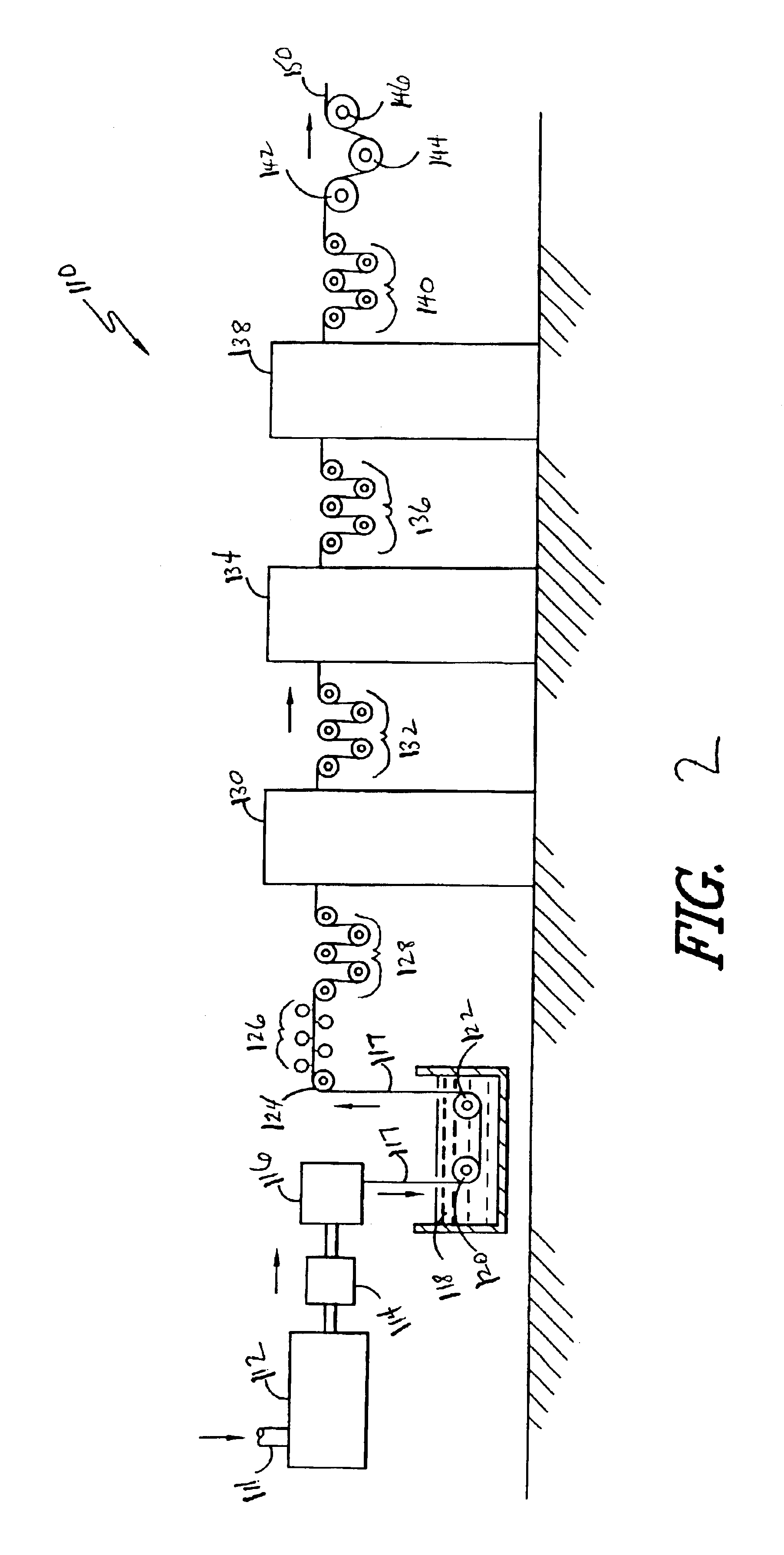Polypropylene monofilament and tape fibers exhibiting certain creep-strain characteristics and corresponding crystalline configurations
a polypropylene monofilament and polypropylene monofilament technology, applied in the direction of yarn, transportation and packaging, synthetic resin layered products, etc., can solve the problems of high shrinkage rate, residual shrinkage effect of the article itself, and high shrinkage rate of prior applications utilizing standard thermoplastic fibers, so as to improve shrinkage rate and/or tensile strength, the effect of increasing the tensile strength of thermoplastic fibers
- Summary
- Abstract
- Description
- Claims
- Application Information
AI Technical Summary
Benefits of technology
Problems solved by technology
Method used
Image
Examples
example 1
Slit Film Tape
Nucleator concentrate was made by mixing powder phase nucleator with powdered polypropylene, PP, resin with an MFI of 35 g / 10 min (Basell PDC1302) in a high speed mixer at 10% concentration, extruded through a twin screw extruder at an extruder temperature of 240° C., and then cut into concentrate pellets. Concentrates were made of both Millad 3988 (DMDBS) and Millad 3940 (p-MDBS) and were let down into a PP resin with a melt flow of 3.5-3.8 g / 10 min (Huntsman P4G320050) at a level of 2.25% to give 0.225% (2250 ppm) nucleator concentration in the final polymer. This mixture, consisting of PP resin and the additive nucleator, was extruded using a single screw extruder through a film dye approximately 72 inches wide. The PP melt throughput was adjusted to give a final tape thickness of approximately 0.002 inches. The molten film was quenched in room temperature (about 25° C.) water and transferred by rollers to a battery of knives, which cut it into parallel strips. Duri...
example # 2
EXAMPLE #2
Monofilament
Nucleator concentrate (DMDBS) was made by mixing powder phase nucleator with powdered PP resin with an MFI of 35 (Basell PDC1302) in a high speed mixer at a 10% concentration, extruded through a twin screw extruder at an extruder temperature of 240° C., and cut into concentrate pellets. The concentrates were let down into two PP resins: the first with an MFI of 12-18 g / 10 min (Exxon 1154) and the second with an MFI of 4 g / 10 min (Exxon 2252) at a level of 2.25% to give 0.225% (2250 ppm) nucleator concentration in the final polymer. This mixture, consisting of PP resin and the additive nucleator, was extruded using a single screw extruder through monofilament spinnerets with 60 holes. The PP melt throughput was adjusted to give a final monofilament denier of approximately 520 g / 9000 m. The molten strands of filament were quenched in room temperature water (about 25° C.), and then transferred by rollers to a battery of airs knives, which dried the filaments. The ...
example # 3
Example #3
Monofilament
Nucleator concentrate (DMDBS and p-MDBS) was made by mixing powder phase nucleator with powdered PP resin with an MFI of 35 (Basell PDC1302) in a high speed mixer at a 10% concentration, extruded through a twin screw extruder at an extruder temperature of 240° C., and cut into concentrate pellets. The concentrates were let down into a homopolymer polypropylene resins with an MFI of 12-18 g / 10 min (Exxon 1154) at a level of 2.25% to give 0.225% (2250 ppm) nucleator concentration in the final polymer. This mixture, consisting of PP resin and the additive nucleator, was extruded using a single screw extruder through monofilament spinnerets with 40 holes. The PP melt throughput was adjusted to give a final monofilament denier of approximately 520g / 9000m. The molten strands of filament were quenched in room temperature water (about 25° C.), and then transferred by rollers to a battery of airs knives, which dried the filaments. The filaments, having been dried, were ...
PUM
| Property | Measurement | Unit |
|---|---|---|
| shrinkage | aaaaa | aaaaa |
| temperature | aaaaa | aaaaa |
| temperature | aaaaa | aaaaa |
Abstract
Description
Claims
Application Information
 Login to View More
Login to View More - R&D
- Intellectual Property
- Life Sciences
- Materials
- Tech Scout
- Unparalleled Data Quality
- Higher Quality Content
- 60% Fewer Hallucinations
Browse by: Latest US Patents, China's latest patents, Technical Efficacy Thesaurus, Application Domain, Technology Topic, Popular Technical Reports.
© 2025 PatSnap. All rights reserved.Legal|Privacy policy|Modern Slavery Act Transparency Statement|Sitemap|About US| Contact US: help@patsnap.com



